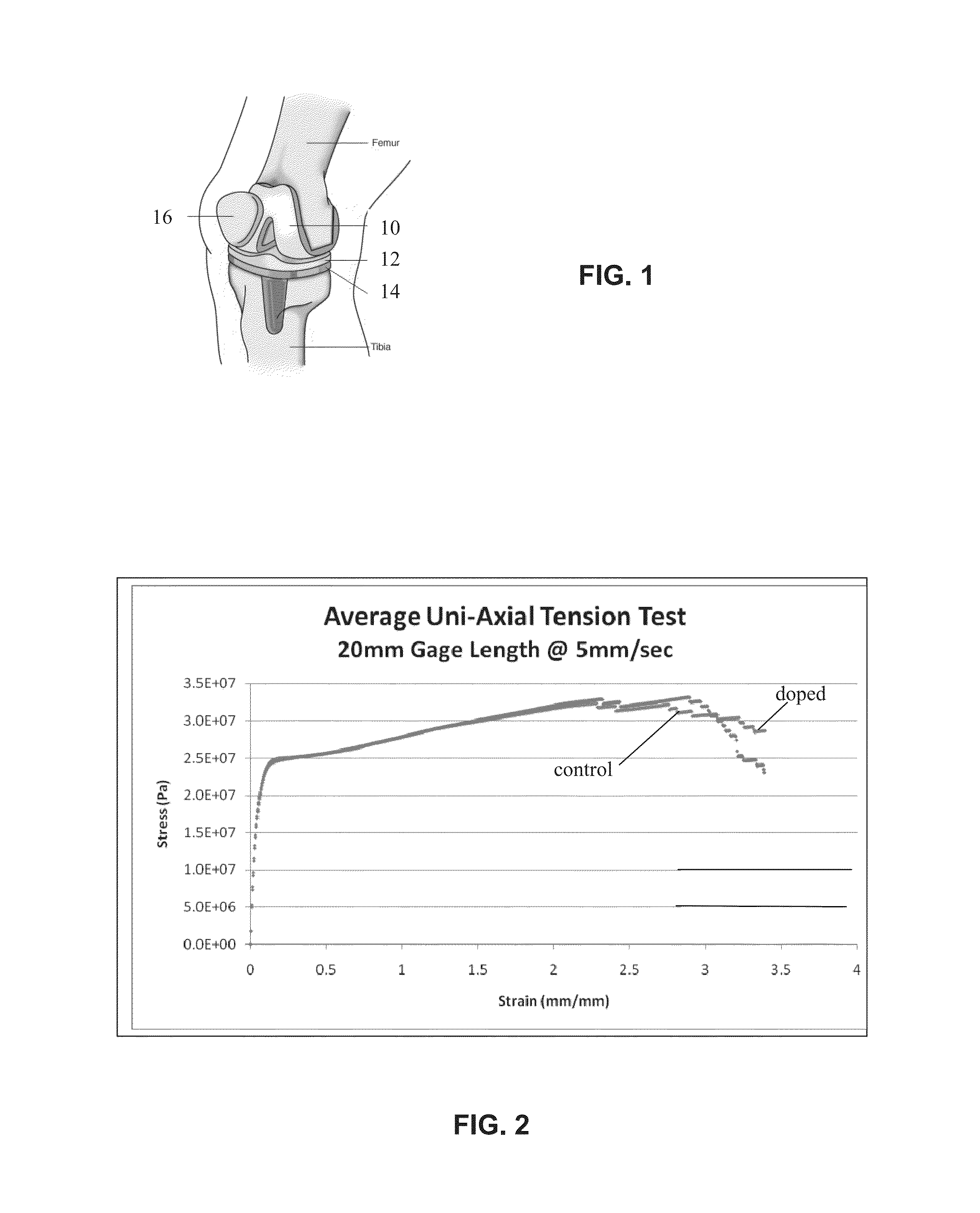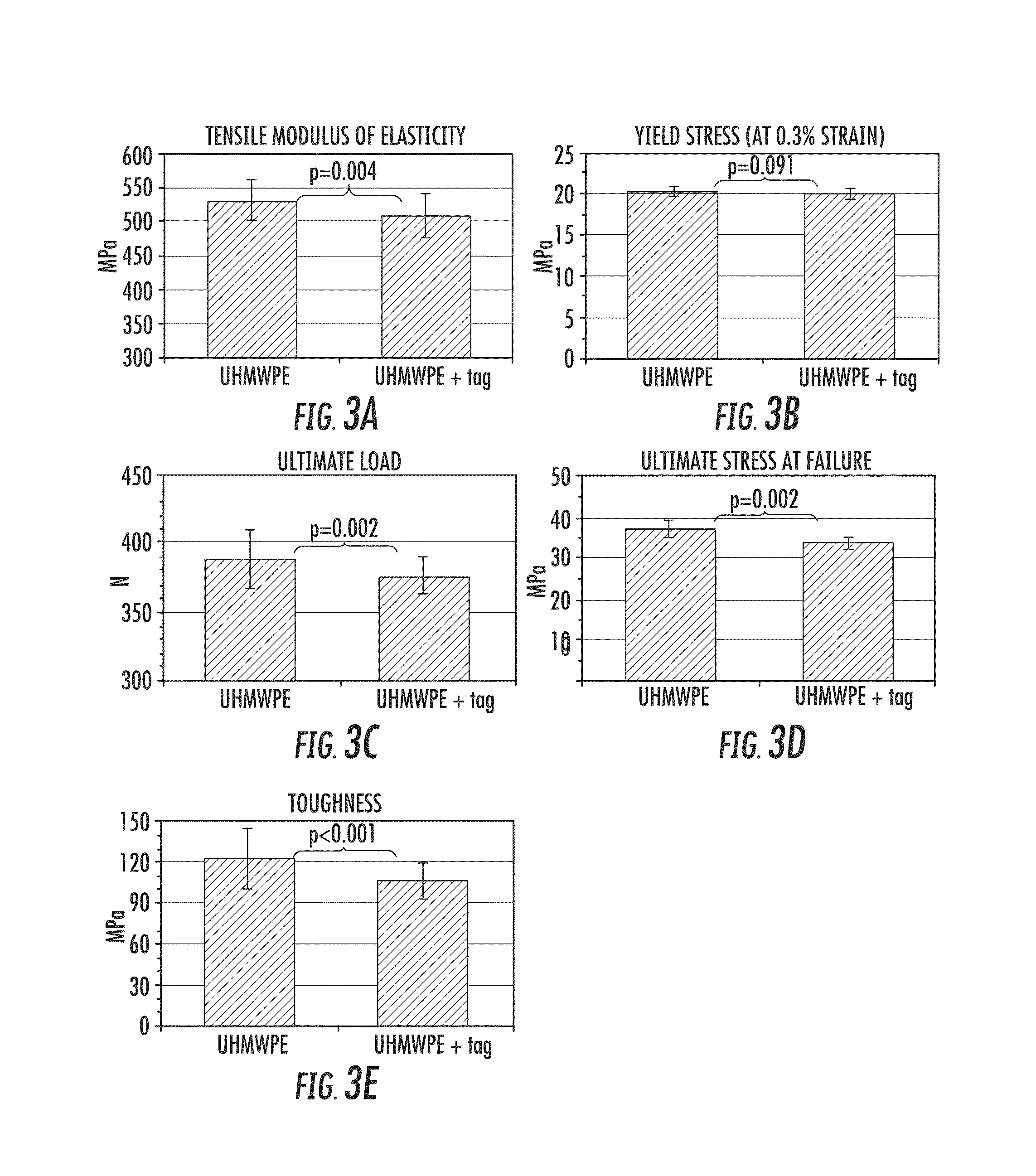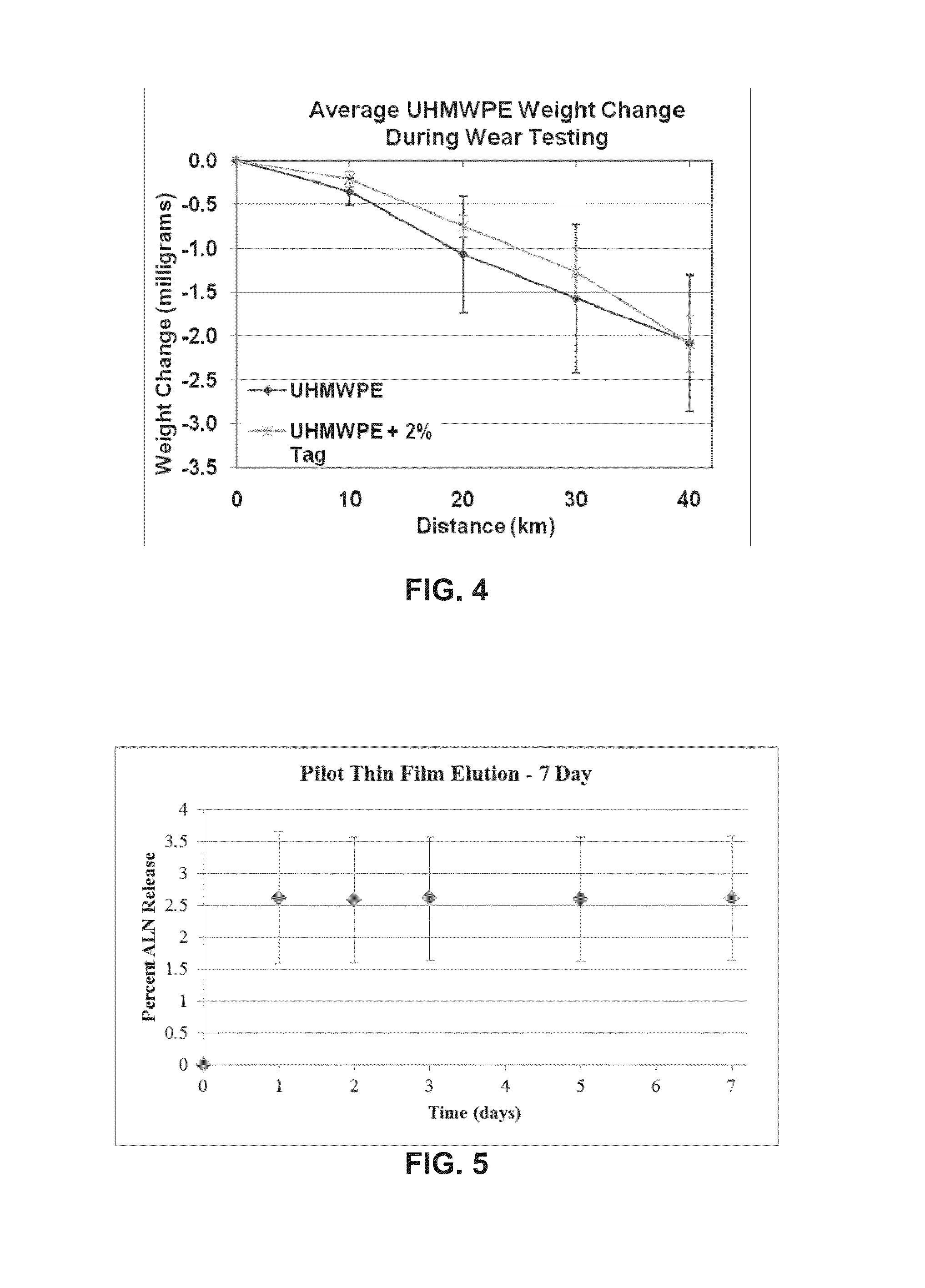Service induced byproducts for localized drug delivery in orthopaedic implants
a technology of orthopaedic implants and byproducts, which is applied in the direction of prosthesis, tissue regeneration, coating, etc., can solve the problems of wear particles, increased joint longevity, and failure of implants
- Summary
- Abstract
- Description
- Claims
- Application Information
AI Technical Summary
Benefits of technology
Problems solved by technology
Method used
Image
Examples
example 1
[0060]Studies were conducted to assess the mechanical properties of UHMWPE composite including tensile testing and pin-on-disk tribological testing.
[0061]Blocks of UHMWPE composite were prepared using 2% (by weight) dopant of 8-Anilino-1-naphthalenesulfonic acid hemimagnesium salt hydrate (available from Sigma) containing a naphthalene fluorescent tag, blended with UHMWPE powder (GUR® 4150 Ticona). The dopant is hydrophilic and of similar size (MW=310) to alendronate sodium (MW=325.12), which is sold under the brand name Fosamax™ (Merck Inc.).
[0062]UHMWPE and the additive were blended using dry mixing via a vortexer (VWR Standard Mini Vortexer; speed=10) for 10 minutes. Additive distribution was determined by visual inspection of the green particles (tag) within the translucent polyethylene matrix.
[0063]Following mixing, all UHMWPE specimens were compression molded using a Carver press. Table 2 details the times and pressures used in the compression molding process. For initial tens...
example 2
[0073]Drug elution tests were performed using small blocks (1.0 cm×1.0 cm×1.0 cm) of polyethylene (n=6) and PE-BP (2% w / w of bisphosphonate, n=6) molded using a custom mold. Each polyethylene specimen was molded using 950±0.5 mg GUR® 4150 UHMWPE. Each PE-BP specimen was molded using the same amount of polyethylene (950±0.5 mg GUR® 4150 UHMWPE) with the addition of 19.4±0.2 mg alendronate sodium, a bisphosphonate (BP). All specimens were compression molded as previously described. Dimensions of each specimen as well as gravimetric weights were obtained prior to the experiment as some material was lost in the compression molding process due to flashing. Data allowed for estimations of actual alendronate content in each block for drug elution calculations. Specimens were not washed prior to drug elution tests to ensure that alendronate would be in a measurable range. Measurements and weights allowed for estimations of actual alendronate content in each block and therefore thin films fr...
example 3
[0091]A total knee simulator experiment was conducted as a more rigorous wear test with generic right tibial plateau and femoral component. This design was selected to use already existent custom compression mold for the tibial insert allowing for compression molded components instead of machined.
[0092]Tibial components were molded using solely GUR® 4150 UHMWPE (Ticona) or GUR® 4150 UHMWPE with 2% alendronate sodium (ALN), a bisphosphonate (BP). Each polyethylene and PE-ALN specimen was molded using the same methodology previously described in Example 1.
[0093]A 4-station Stanmore / Instron Knee Simulator was used with two stations containing polyethylene and PE-ALN for a 2-million cycle experiment. The molded components were machined to lock within the tibial plateau. The bearing surfaces of these components were compression molded; however, to have proper use of the locking mechanism, grooves had to be machined into the anterior and posterior non-weight bearing surfaces of the compon...
PUM
| Property | Measurement | Unit |
|---|---|---|
| particle diameter | aaaaa | aaaaa |
| depth | aaaaa | aaaaa |
| thick | aaaaa | aaaaa |
Abstract
Description
Claims
Application Information
 Login to View More
Login to View More - R&D
- Intellectual Property
- Life Sciences
- Materials
- Tech Scout
- Unparalleled Data Quality
- Higher Quality Content
- 60% Fewer Hallucinations
Browse by: Latest US Patents, China's latest patents, Technical Efficacy Thesaurus, Application Domain, Technology Topic, Popular Technical Reports.
© 2025 PatSnap. All rights reserved.Legal|Privacy policy|Modern Slavery Act Transparency Statement|Sitemap|About US| Contact US: help@patsnap.com



